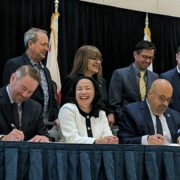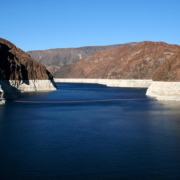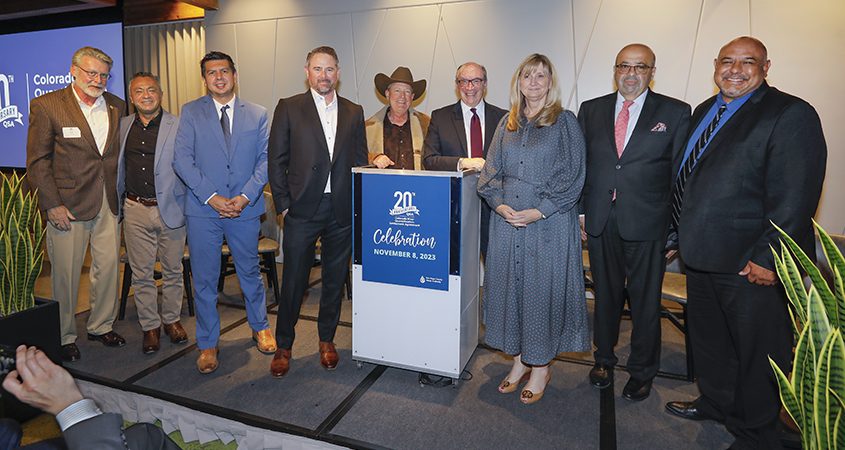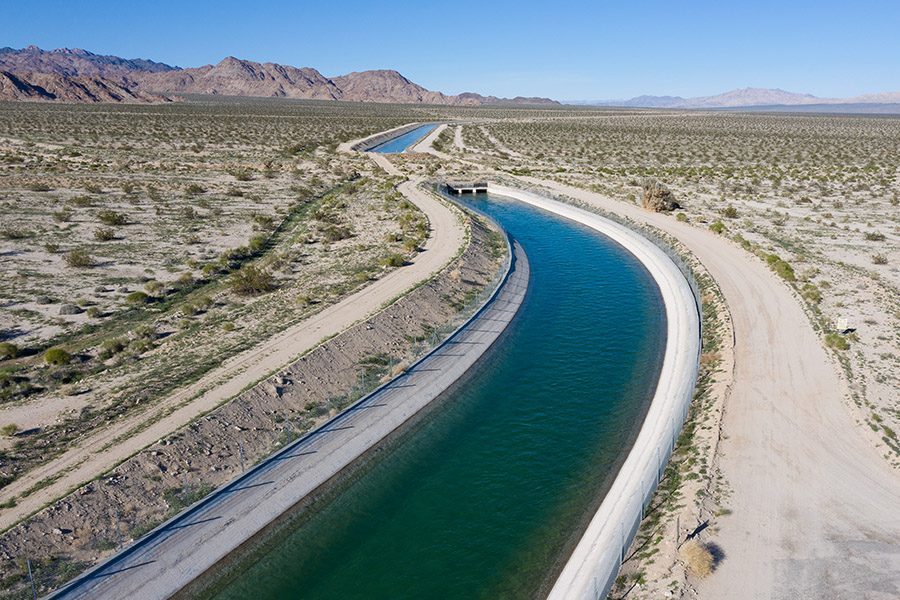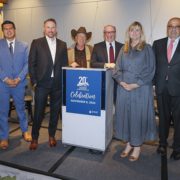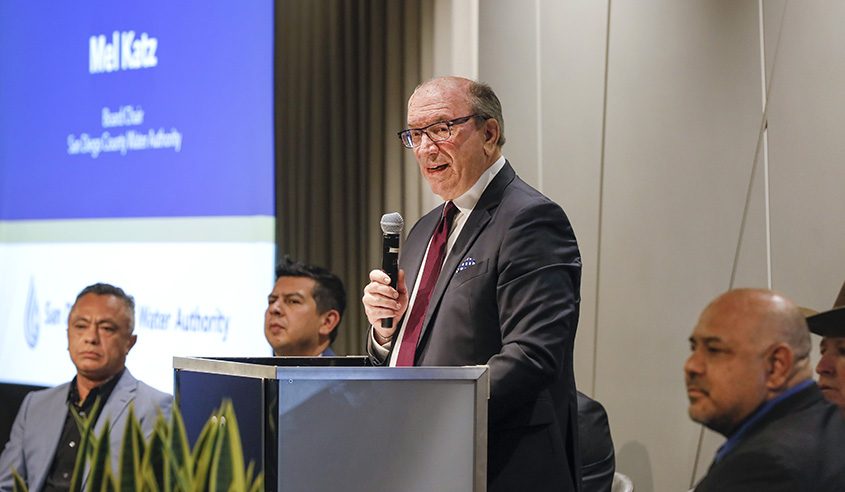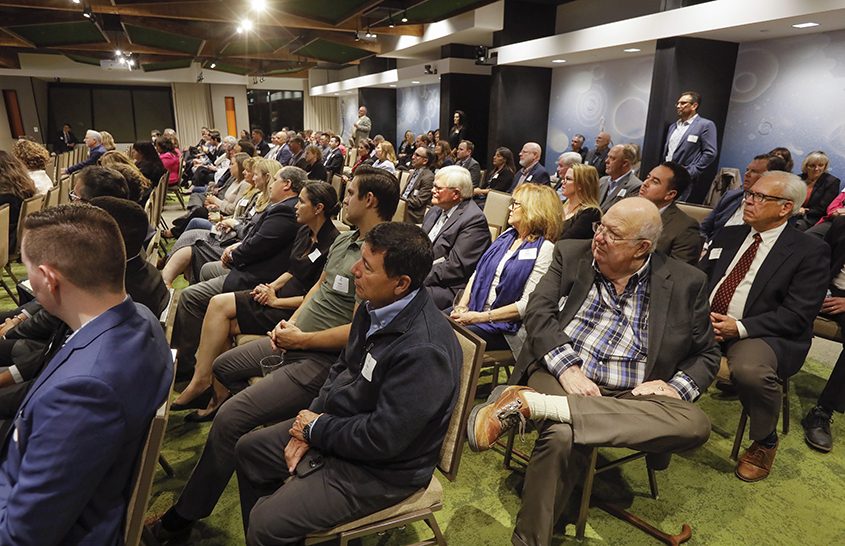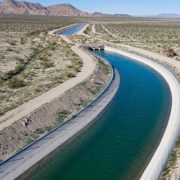Historic Agreement Signed To Protect The Colorado River
The San Diego County Water Authority today joined the Imperial Irrigation District, Metropolitan Water District of Southern California, Fort Yuma Quechan Indian Tribe, Palo Verde Irrigation District, Coachella Valley Water District, and the United States Bureau of Reclamation in signing a historic agreement to protect the Colorado River Basin. It is the first in a series of agreements to conserve 1.6 million acre-feet of water to remain in Lake Mead.
The landmark water agreements are a vital part of the Lower Basin Plan by Arizona, California, and Nevada to protect the Colorado River from extended drought — a plan identified this fall as Reclamation’s proposed action for near-term Colorado River operations. Funds to facilitate the deal are from the federal 2022 Inflation Reduction Act.
Water Authority Board Chair Mel Katz, General Manager Dan Denham, and Board member and vice chair of the Colorado River Board of California Jim Madaffer, were part of today’s signing ceremony in Las Vegas in conjunction with the Colorado River Water Users Association annual conference. The Water Authority’s piece of the multi-party pacts is expected to save the San Diego region $15 million to $20 million (depending on hydrological variables), which will help offset the impact of inflation and other factors pushing up water rates.
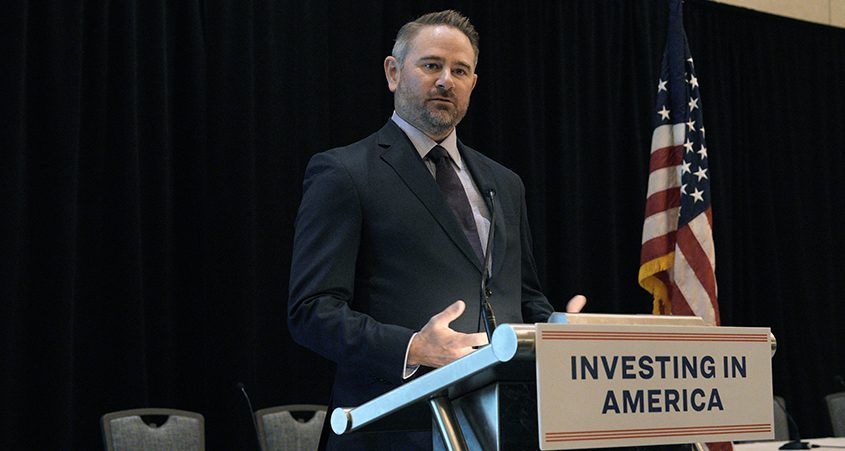
Water Authority General Manager Dan Denham speaks at the December 13 signing ceremony in Las Vegas, supporting a set of agreements to sustain the Colorado River and save money for San Diego County water ratepayers. Photo: San Diego County Water Authority
“This is a significant moment not just for today but for the long-term survival of the Colorado River,” said Denham. “All the critical pieces are here: willing partners, meaningful levels of conservation, federal funding, environmental benefits for the Salton Sea, and respect for the Law of the River.”
Today’s signed agreement ensures Lake Mead, the nation’s largest reservoir, can continue delivering water to millions of people and millions of acres of farmland, including in San Diego County, over the next three years. Additional agreements are anticipated to be signed in 2024 with the Bard Water District, the Coachella Valley Water District, and the Imperial Irrigation District.
“Less than a year ago, we faced the worst possible consequences of drought and interstate conflict. Today, California’s agricultural, urban, and tribal users are banding together through these agreements to protect the Colorado River as part of the Lower Basin Plan with the instrumental support of the Bureau of Reclamation. It’s an incredible turnaround,” said JB Hamby, chairman of the Colorado River Board of California and Colorado River Commissioner for California.
Earlier Partnership Creates Foundation for Cooperation
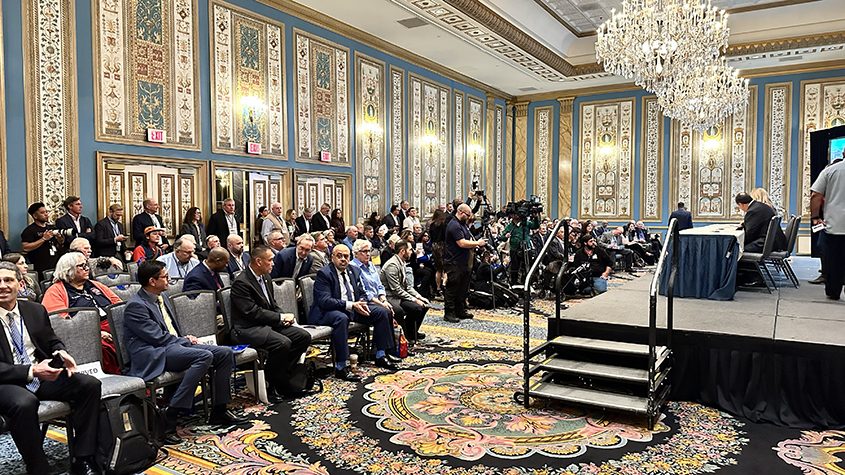
Witnesses to history await the Dec. 13 signing ceremony in Las Vegas, supporting a set of agreements to sustain the Colorado River and save money for San Diego County water ratepayers. Photo: San Diego County Water Authority
Today’s agreements build on the groundbreaking 2003 Quantification Settlement Agreement. The QSA achieves several goals by helping California meet conservation obligations under Reclamation’s Lower Colorado River Basin conservation program, supporting financial viability for participating agencies, and reducing the chances for more shortages. The river system has suffered drought-induced decline for more than 20 years.
“IID remains fully committed to working proactively with its partners for the long-term sustainability of the Colorado River and Lake Mead, the source of IID’s only water supply,” said Imperial Irrigation District General Manager Jamie Asbury. “We are equally committed to ensuring any impacts to the Salton Sea resulting from regional solutions with broader beneficiaries are appropriately addressed to protect our community.
“IID’s involvement, and particularly that of Imperial Valley growers who will be generating much of this water through voluntary on-farm conservation measures, exemplifies our collective commitment and support that will be paramount in the long-term success of the River.”
Metropolitan General Manager Adel Hagekhalil said: “Each one of these agreements is evidence of what we can achieve when we work together. This collaborative effort, including federal financial support and Metropolitan’s commitment to leave more than 400,000 acre-feet of water in Lake Mead this year, will help stabilize the reservoir while we negotiate longer-term solutions.
“There is much work ahead. Building lasting solutions will take even greater partnership and investment from us all.”
The Water Authority, MWD, and IID have been working together for several months on ways to capitalize on current water supplies. Due to a historically wet year, the State Water Project is delivering complete supplies to MWD, refilling reservoirs, and reducing demand for imported Colorado River water. The MWD Board of Directors approved the agreement in November, and the IID Board followed with its approval on December 1.
How the Water Authority’s Piece Works
The Water Authority will leave 50,000 acre-feet of conserved QSA water in the Colorado River. This helps raise the level of Lake Mead, which has dropped in recent years. The volume is equivalent to the amount of water used in a year by approximately 150,000 single-family homes.
The Water Authority agreed to buy 50,000 acre-feet from MWD to meet current and future demands. The Water Authority’s cost savings result from the difference between the MWD rate and the rate for IID’s conserved water through the QSA. The Bureau of Reclamation will cover the cost of the Water Authority’s QSA supplies left in the river.

